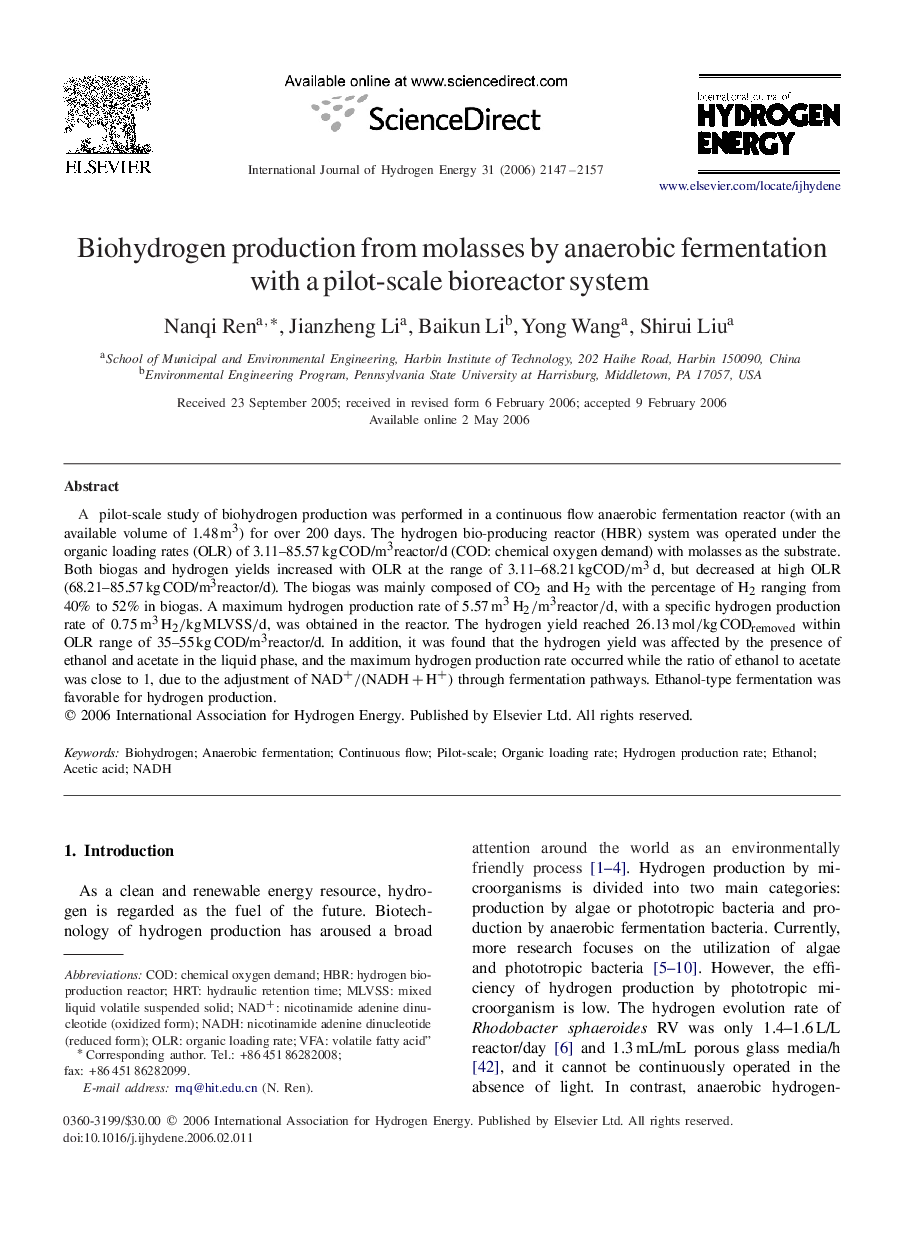| Article ID | Journal | Published Year | Pages | File Type |
|---|---|---|---|---|
| 1280383 | International Journal of Hydrogen Energy | 2006 | 11 Pages |
Abstract
A pilot-scale study of biohydrogen production was performed in a continuous flow anaerobic fermentation reactor (with an available volume of 1.48 m3) for over 200 days. The hydrogen bio-producing reactor (HBR) system was operated under the organic loading rates (OLR) of 3.11-85.57 kg COD/m3reactor/d (COD: chemical oxygen demand) with molasses as the substrate. Both biogas and hydrogen yields increased with OLR at the range of 3.11-68.21kgCOD/m3d, but decreased at high OLR (68.21-85.57 kg COD/m3reactor/d). The biogas was mainly composed of CO2 and H2 with the percentage of H2 ranging from 40% to 52% in biogas. A maximum hydrogen production rate of 5.57m3H2/m3reactor/d, with a specific hydrogen production rate of 0.75m3H2/kgMLVSS/d, was obtained in the reactor. The hydrogen yield reached 26.13mol/kgCODremoved within OLR range of 35-55 kg COD/m3reactor/d. In addition, it was found that the hydrogen yield was affected by the presence of ethanol and acetate in the liquid phase, and the maximum hydrogen production rate occurred while the ratio of ethanol to acetate was close to 1, due to the adjustment of NAD+/(NADH+H+) through fermentation pathways. Ethanol-type fermentation was favorable for hydrogen production.
Keywords
Related Topics
Physical Sciences and Engineering
Chemistry
Electrochemistry
Authors
Nanqi Ren, Jianzheng Li, Baikun Li, Yong Wang, Shirui Liu,
